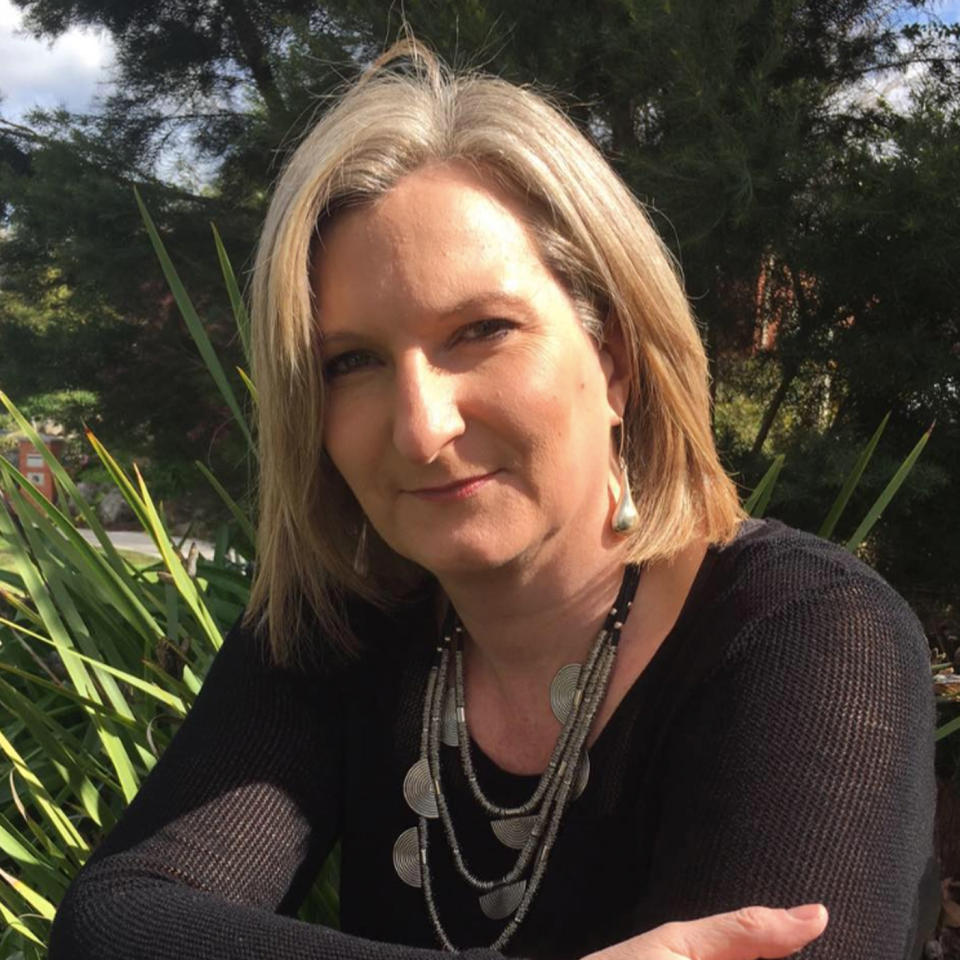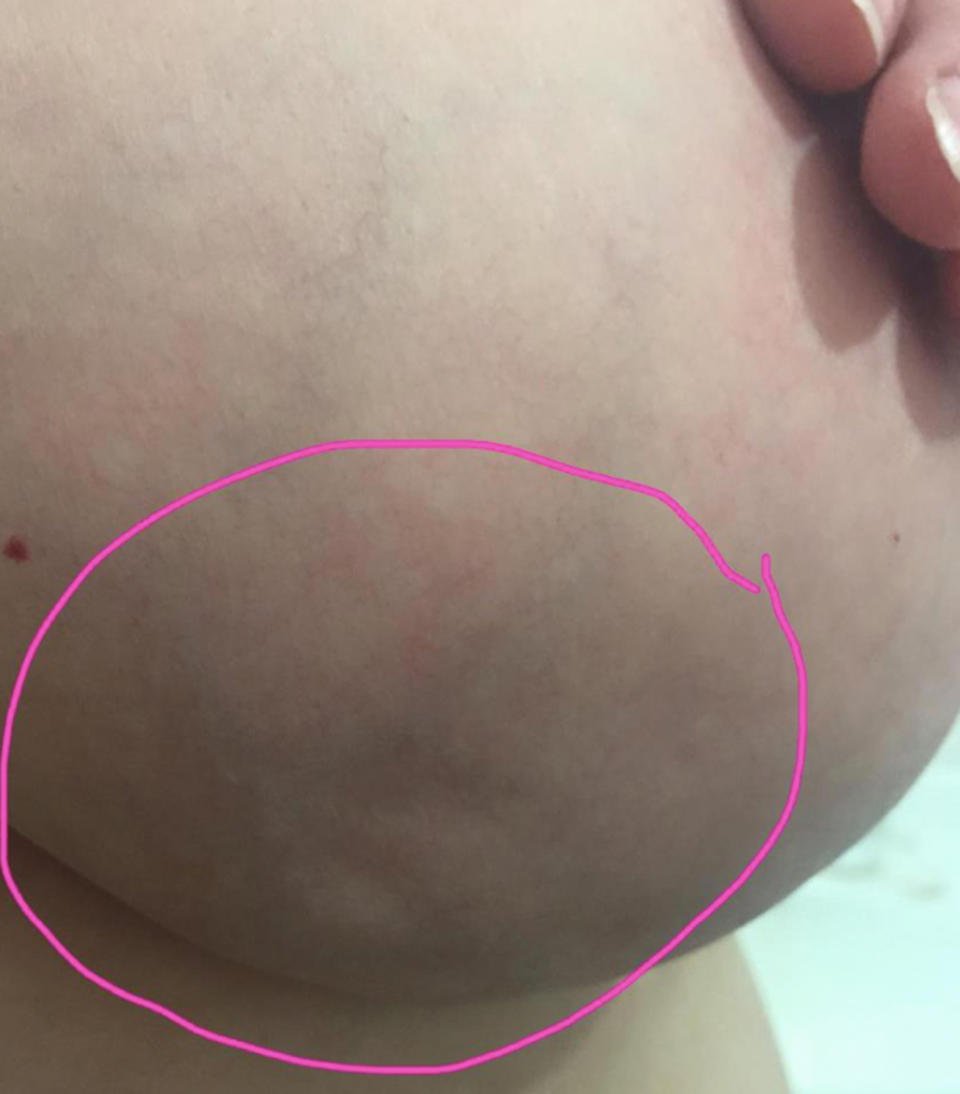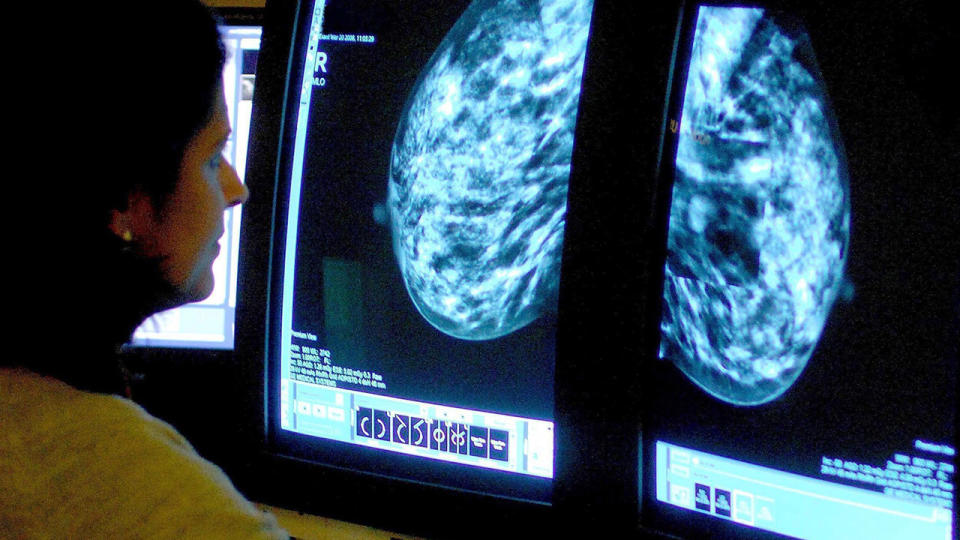'Take a good look at this photo': Woman's harrowing image sparks powerful reaction
When Melbourne mother Kylie Armstrong took to Facebook in February 2016, she had an important message for her friends and family.
The 47-year-old had been dealt the devastating news she had breast cancer and she wanted to warn her nearest and dearest about her experience.
“It was a difficult time for myself and my family telling work colleagues and others. I felt like I was repeating the story over and over again,” Ms Armstrong told Yahoo7 News about her decision to turn to social media.
Yet two and a half years on, her post has stretched beyond her small circle of peers and has resonated across the globe, helping dozens of other women detect their breast cancer before it was too late.
After consulting with her teenage sons, Ms Armstrong was given the green light to share an image of part of her breast with an abnormal lumped marking on it shortly after her diagnosis in a bid to warn others.

“I didn’t feel a lump and I tell them the story and I raised my arm and I thought these dimples were a bit different,” she recalled.
“Please take a good look at this photo,” her post began.
“These 3 very, very subtle DIMPLES on the bottom of this breast are a sign of BREAST CANCER!”
She went on to describe the devastating effect the markings had on her family, saying the mark had turned her life and her families “upside down”.
To her disbelief, the post soon began to be appear right across the world, with tens of thousands of shares on Facebook.
“It was a little bit surreal… I would never have thought it could have been spread as far as it went,” she said.

Her post has 235,000 shares to date and Ms Armstrong says it has even been shared by celebrities including Ashton Kutcher and Zooey Deschanel.
As the post became viral, Ms Armstrong began receiving messages from other women thanking her for the post as they too were oblivious to such markings could mean cancer.
“It became apparent a lot of people had no clue breast cancer could be something else other than a lump,” she said.
Not only did she help raise awareness, she also helped at least 10 women diagnose their breast cancer in what she describes as bittersweet moment.
“I was contacted by a number of ladies who went and got checked and were subsequently diagnosed,” she revealed.

“They said they would never have thought to get it checked if they hadn’t seen my post.”
She revealed she even kept in touch with several as they “supported each other through it”.
The post became so popular, she was getting interview requests left right and centre, mostly from the US and UK.
“Everyone has seen my boob now,” the textile designer joked.
And even to this day, her post still garners significant traction online, with its Facebook activity still increasing.
“Its doing the rounds again, it seems to to go a bit crazy and keeps coming up in peoples feeds … I’m glad it is.”
Ms Armstrong underwent successful surgery at the time of her cancer, and despite having to “take medication for at least another eight years”, she has returned to her normal life.
She has since been able to use her newfound fame to help raise much-needed funds for cancer charities, including via several fundraisers raising money for the McGrath foundation.
Many breast cancers identified without symptoms, expert says
Associate Professor Annette Katelaris, at the University of Sydney’s Faculty of Medicine and Health, confirmed to Yahoo7 News the symptoms Ms Armstrong displayed was peau d’orange – a dimpled condition of the skin of the breast, resembling the skin of an orange, sometimes found in inflammatory breast cancer.
The University’s Professor of Surgical Oncology, Andrew Spillane, warned that while most women detect breast cancer via a lump, there are women who fail to show any symptoms at all.
“The commonest symptom caused by breast cancer is a lump, however, many breast cancers are identified without any symptoms at all by women participating in Australia’s national screening program, BreastScreen,” he told Yahoo7 News.
“A smaller number of patient’s breast cancers are detected as a result of other symptoms such as nipple discharge, skin changes on the breast, changes of shape of the breast, dimpling or tethering of the skin and sometimes a condition that looks like an infection called inflammatory breast cancer.”

He says it is important women are aware of any changes to their breasts while getting them checked regularly.
“Because breast tissue varies from person to person and because some breast cancers can be very challenging to diagnose it is important if a woman notices any change in her breast that the change should be investigated with thorough clinical examination, appropriate breast imaging and if there is a lesion present then undertake a biopsy,” Professor Spillane said.
“If the woman is uncertain about the advice she receives from any doctor then specialist advice should be sought from a breast disease specialist.”
Follow us on Instagram and Facebook for non-stop inspiration delivered fresh to your feed, every day. For Twitter updates, follow @YahooStyleUK.
Read more from Yahoo Style UK:



